In a peer reviewed paper by Horst-Joachim Ludecke, Rainer Link, and Friedrich-Karl Ewert for the International Journal of Modern Physics entitled: How Natural is the Recent Centennial Warming? An Analysis of 2249 Surface Temperature Records, the three authors conclude that they cannot find a definite human influence on the temperature over the past century and that at most any human warming is only "marginal."
Abstract.
We evaluate to what extent the temperature rise in the past 100 years was a trend or a natural fluctuation and analyze 2249 worldwide monthly temperature records from GISS (NASA) with the 100-year period covering 1906-2005 and the two 50-year periods from 1906 to 1955 and 1956 to 2005. No global records are applied. The data document a strong urban heat island e ffect (UHI) and a warming with increasing station elevation. For the period 1906-2005, we evaluate a global warming of 0.58 0C as the mean for all records. This decreases to 0.41 0C if restricted to stations with a population of less than 1000 and below 800 meter above sea level. About a quarter of all the records for the 100-year period show a fall in temperatures. Our hypothesis for the analysis is - as generally in the papers concerned with long-term persistence of temperature records - that the observed temperature records are a combination of long-term correlated records with an additional trend, which is caused for instance by anthropogenic CO2, the UHI or other forcings. We apply the detrended fluctuation analysis (DFA) and evaluate Hurst exponents between 0.6 and 0.65 for the majority of stations, which is in excellent agreement with the literature and use a method only recently published, which is based on DFA, synthetic records and Monte Carlo simulation. As a result, the probabilities that the observed temperature series are natural have values roughly between 40% and 90%, depending on the stations characteristics and the periods considered. 'Natural' means that we do not have within a de fined confidence interval a de finitely positive anthropogenic contribution and, therefore, only a marginal anthropogenic contribution can not be excluded.
Conclusion:
In this paper, we have used 2249 unadjusted monthly temperature records of 100 and 50 years in length and evaluated the temperature changes for the periods 1906-2005, 1906-1955, and 1956-2005. Our analysis was based exclusively on local records and applied DFA, Monte Carlo methods and synthetic records. The main results and conclusions are the following.
a) The mean of all stations shows 0.58 0C global warming from 1906 to 2005. If we consider only those stations with a population of under 1000 and below 800 meter above sea level this gure drops to 0.41 0C and would probably decrease even further if we were to take into account the warm biases caused by the worldwide reduction in rural stations during the 1990s, by changes to the screens and their environments, and by the appearance of automatic observing systems.
b) From 1906 to 2005, about a quarter of all records show falling temperatures. This in itself is an indication that the observed temperature series are predominantly natural fluctuations. 'Natural' means that we do not have within a defi ned confidence interval a de finitely positive anthropogenic contribution and, therefore, only a marginal anthropogenic contribution can not be excluded. We evaluated - with a con fidence interval of 95% - the probability that the observed global warming from 1906 to 2005 was a natural fluctuation as lying between 40% and 70%, depending on the station's characteristics. For the period of 1906 to 1955 the probabilities are arranged between 80% and 90% and for 1956 to 2005 between 60% and 70%.
c) By separating stations into specifi c station groups, such as those with a de fined minimum population, a strong UHI and elevation warming can be identified.
d) The vast majority of temperature stations are found on land and in the northern hemisphere, and have Hurst exponent of a = 0:63 in such locations. However, two thirds of the Earth are covered with water, and the relatively few stations on islands or near oceans have higher Hurst exponent of a = 0:7. Therefore, a real exponent for the entire Earth could be somewhat higher than a = 0:63. Records with higher exponents embody even higher probabilities for natural fluctuations.
Subscribe to:
Post Comments (Atom)




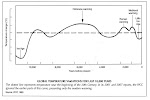


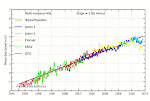

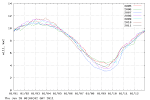

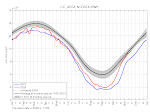

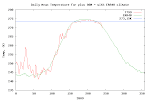
No comments:
Post a Comment